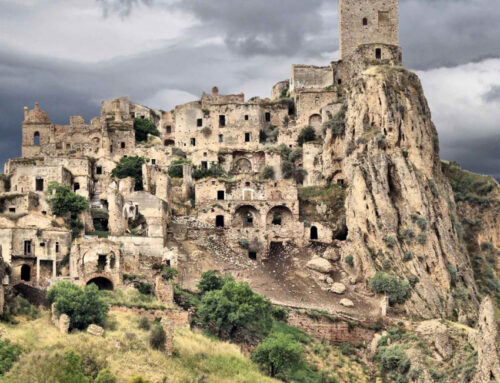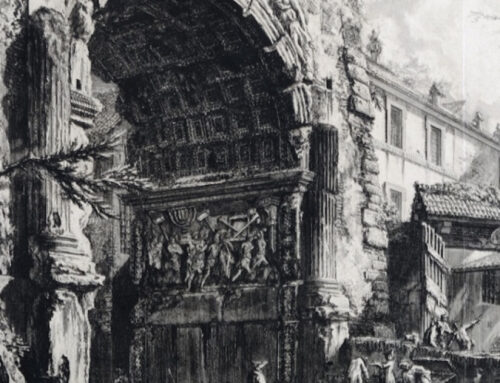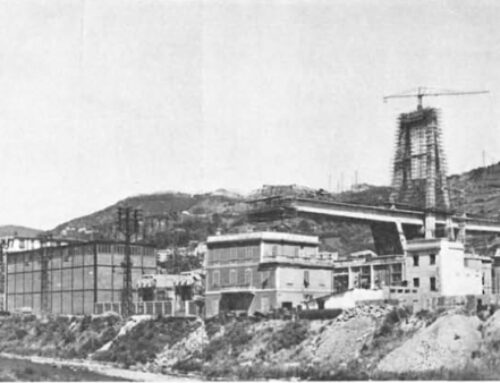Dangers to the sense of landscape from the cultural vacation, from the slavery of contingent times, from the loss of the idleness of vacations.
Abatantuono, a parvenu on the slab, locks himself in the basement with his family all of August so that he can later tell them he went on vacation (in Southern Seas, a 2001 Cesena film). We laugh at the paradoxical ruse, but even we, citizens who go on vacation in August, do not joke about masochistic paradoxes.
Despite the depressing heat we consider it a duty to move from the places where we stay the rest of the year to other places. A duty to ourselves, a right that humiliates those who do not exercise it: we must move, no matter what. It is the paroxysmal outcome of a sociocultural process that has lasted for more than half a century.
Our fathers and grandfathers who could afford it sent the family on vacation; in the narrative of the return result fifty or a hundred days of leisure, of lazing around and loving: leave out the three or four days of travel and various annoyances.
The same in the middle generation, dominated by seaside hypnosis, even if the weekdays are reduced: the chosen troops of those who make season with the second home are accompanied by the army of month-long, then two-long, and now week-long renters. But the idles and loves remain on the desired horizon for the rest of the year: I look for summer all year round and suddenly, here it is…..
But the real change is in the last generation: the travel generation. Today’s vacation accounts are full of shifting and troublesome passages: packing and unpacking, jetlag, cleaning imprested house and/or agonizing over reservation mishap, sickness from museum queue and/or hangover, bronchitis from thunderstorm along trekking and/or gastritis from rage of stolen documents… In short, the travel vacation account tells of a busy time, without idle time and without love, full of misadventures as in the novels of Marquis De Sade.
It is not only a busy time: it is preoccupied. It is a perverse effect of the new Trivago and Airb&b hypnosis, bewitching with spring evenings spent looking for low-cost flights and discounted packages for the summer, and making it a perfect puzzle for the twenty-day vacation, predefined since Christmas. Thus we build cages for ourselves: stuck even more than at home, the new cultural tourists move within the tight timeframe of self-made schedules. They are anxiogenic machines, like the much-criticized ones of organized travel, but now in addition one cannot even vent to criticize the tour operator.
Thus a metamorphosis of not only the classic leisure time, that of the vacation, is consolidated: but a new dimension of travel is advanced.
If vacationing with its idleness and loves demands to be hosted in places to be thoroughly inhabited, where each person can recognize the space for his or her own identities and habits (for this year don’t change, same beach, same sea), the touring vacation throws us into the universe of the collector. Each year’s travel allows us to enrich the flags on the personal atlas with many different places. It is a compulsive urge: places are reached, although they go visited, obviously not inhabited. Nor do they want to be inhabited: the phrase “We have already been there” does not make one choose a destination; on the contrary, it makes one exclude it. The frequentation of a place, the reassuring repetition of acts and views, which the sense of inhabiting entails, is not considered important.
On the other hand, destination and travel also do not matter: there are only stages. The vacation journey is often an itinerary to be followed like a game of the goose, not a journey to something or to be enjoyed along the way. It is a perverse effect that also involves the products of slow fashion: one goes by plane until the departure of the itinerary to be made by bike, and each day the predetermined route must be made until we reach the stage finish line, where we will find our luggage and a welcome drink. And so on day after day throughout the week, then plane and home. End of the trip and vacation. After one day, even the pain in the butt goes away.
If you take away the logistical events, mostly memorable for the pains of the body, there is little room in the narrative for what was seen. The ease of leaving a trail of selfies and videos to post reduces the time to absorb the effects of a place and thus to be able to talk about it. And, as we know, what you don’t talk about you don’t memorize, and after a few months it never happened: you look at photos with bewildered eyes … Where were we here? … I had the fuchsia sarong … so it was 2014 and therefore we MUST have been in Mikonos.
Inside this machine that forces vacation time and space into a predefined data base and a collection of memories of misadventures, what happens to the landscape?
This is not an idle question (maybe!): to the model of cultural travel we entrust the hopes for the development of our tourism and to our tourism we entrust the hopes for the development of our country. We promote to the maximum the hospitality of cities of art, we include villages and monasteries, we encourage the tourist reuse of underutilized houses, we feed on the network the immense bengodi of itinerary choices. And in this marketing of the whole of Italy, “landscape” does brand as much as and more than “museum” (though now less than “starred cuisine”).
So, if on vacation we are tourists, on vacation the landscape touches us. But is it landscape that the minister is thinking about when he says, Italian landscape, element to attract cultured tourism? (title of the report of the Landscape Day, March 14).
The archetype of the cultured tourist who enjoys the landscape is of course C.D.Friedrich’s lonely cylindrato gazing at the sea of clouds from a mountaintop; but that well-heralded archetype is scrapped the reality of the crowds that prevent people from walking not only in St. Mark’s Square, but also along the paths of the 5 Terre or the ascents to the 4000 Alps.
Those landscapes (like any landscape) are made by the relationship one establishes with the place, and if the place is full of people, this aspect significantly determines the relationship. St. Mark’s Square full of people in masks is another landscape of that same empty square with evening lights. It is obvious, but the compulsive tourist pretends not to know this, and visits Kyoto, Machu Picchu and Selinunte, between 1 and 4 p.m. on August 12, as they are, thinking he is savoring the landscape.
He lies to himself.
The educated tourist knows (or at least should know) that the sense of landscape is not a given, not given. Even if it never closes, if you can always see it, it may happen that a famous landscape does not generate any remarkable sense for you, not so much because of it as because at that moment you are not able to connect with that place (and you only have that moment). We neglect that the landscape is the result of an internal metabolization of the relationship with the outside world, which requires us to get in tune with the place in order to grasp aspects of it that resonate with our capacities to understand it.
It is the result of time-consuming work, in a process that sequences attention (tension toward), contemplation (bringing us to the templum, that is, to the defined horizon in which we know how to relate to the undefined context), reflection (turning of self toward). The definitions in parentheses, taken from the etymological vocabulary, say in general what my grandfather used to do every summer, having settled the family in a rented mid-mountain cottage: he would take his bicycle with his easel, a plywood board and color palette to a lonely vantage point and there, afternoon after afternoon, brushstroke after brushstroke, he would paint what he saw, with a fragrant flower in one nostril.
Landscape: work that needs time, idleness and love.




